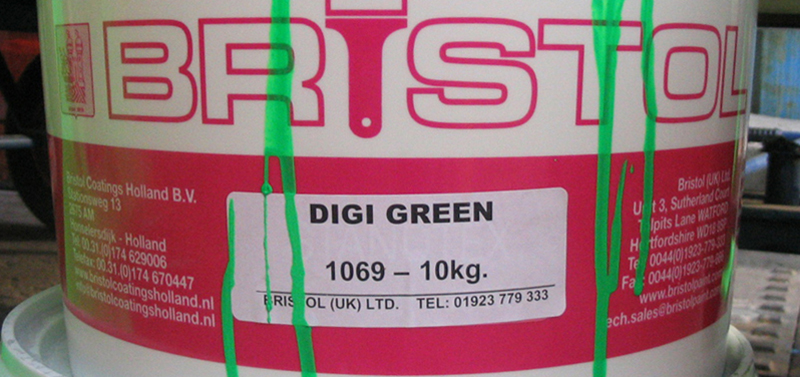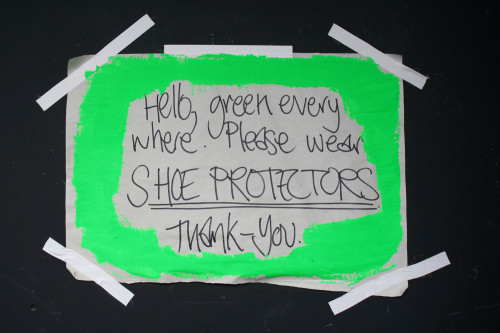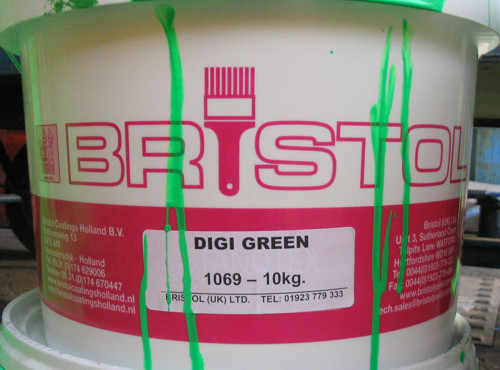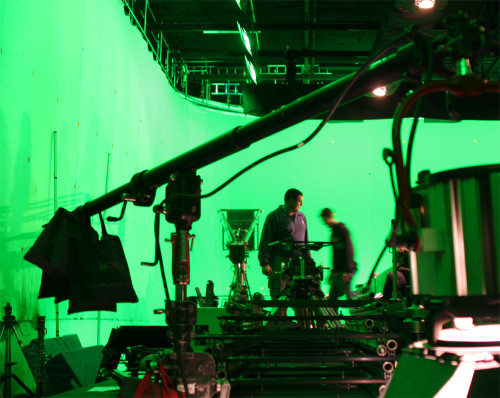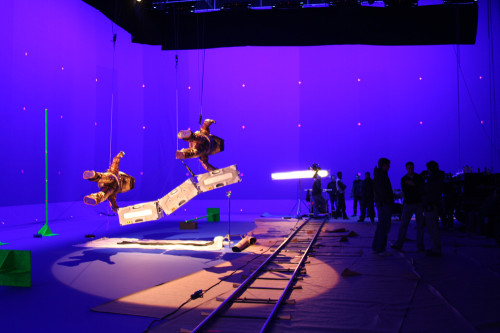One of the things that’s been perplexing me lately is this:
Why sometimes blue screen, why sometimes green screen?
Obviously, as a film set in space, there are going to be quite a lot of computer graphics done in post-production over the coming months. Some of the shots will be entirely computer generated – when you see the whole of the spaceship, for example- other scenes will be a composite of live action and computer generated imagery – one of the characters doing a spacewalk or one of the sets extended digitally. The latter composite shots need to be filmed with the live action in front of either a blue screen or a green screen so that the computer generated images can easily be added in place of the blue or the green.
When filming started, Stage 8 and the Airlock set both had blue screen. ‘Normal,’ I thought, ‘Blue. Normal.’ Then suddenly, without any warning whatsoever, Stage 8 and Stage A had green screen.
Why? Why green? Wasn’t blue good enough?
Right now it’s gone really mixed-up and crazy- there’s one studio which is entirely blue screen with no set, another studio which is entirely green screen with no set, but with an enormous model, and one studio which has a set, but the walls are all green screen.
I know that both blue and green can be used to separate the live action from the background image, but I had no idea why both were being used on this film. The man to ask is the Visual Effects Supervisor, Tom Wood. This is what I learned:
The first choice is always blue as it is very easy to isolate because blue doesn’t appear in flesh tones (which, incidentally, are made up of a combination of red and green). Blue screen has been used on the ‘Sunshine’ sets where the actors are wearing certain costumes which contrast very nicely with the blue. As you will remember from one of the photos in my post about the costumes, however, the actors are sometimes wearing blue. Hence the need for green screen. Doh.
Another more technical reason for choosing green over blue is that the film speed being used on ‘Sunshine’ (500, film nerds) would make the blue go a bit too grainy to get a good key edge, which is the defining line between, in this case, the live action and the computer generated imagery.
If you have a close look at the above green screen image you can just make out some little pink dots on the green wall (you might need to look at the bigger image). Those are the ‘tracking markers’. Sometimes the tracking markers are made by using red LED lights, sometimes, like in that photo, they are made of an X of florescent pink gaffer tape with an ever-so-slightly different colour pink square at the very centre.
Tracking markers are used by the Visual Effects department as a guideline to re-create the real camera move with a digital (or virtual) camera move. For example, let’s say there is a two metre tall actor standing two metres away from the camera and the computer generated image behind him will stretch off for 100 metres into the distance. Then let’s say that Alwin Kuchler moves the real camera one metre down to the actor’s waist height, and five metres to the left yet the camera is still pointing up to the actor’s face. The people in Visual Effects need to have some way of seeing the movement on that green or blue screen in the background so they can match that movement in their effects. As they know the distance between and the exact positioning of the tracking markers AND they know the distance between the camera, the action and the tracking markers they can work it all out.
Apparently, no one ever says, ‘Hey, you did the tracking in ‘Charlie and the Chocolate Factory’? Wow, I just love your tracking work’!’ after seeing a film, so the job of working out the tracking can be a thankless one. So, next time you see a film with computer generated imagery, think of those poor people whose job it is to cover a set in tracking markers or those poor people who are stuck in a dark room for months on end going bug-eyed looking at those markers on computer screens. On ‘Sunshine’ there are going to be between 600 and 700 shots with digital effects, approximately on third of the film… that’s a lot of tracking markers… My guess is that there are at least a couple people here who really don’t want to see another tracking marker at all for a while after this finishes filming…
The tracking markers are much easier to see on this blue screen image, but as there’s some top secret filming going on, I had to pixelate it (2014 update: obviously I can show you now).

